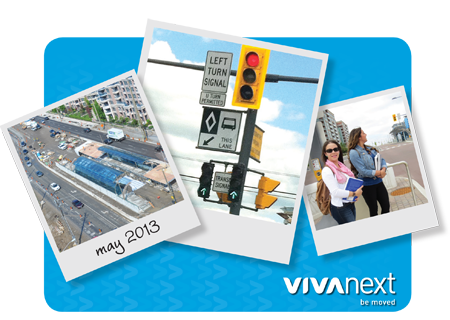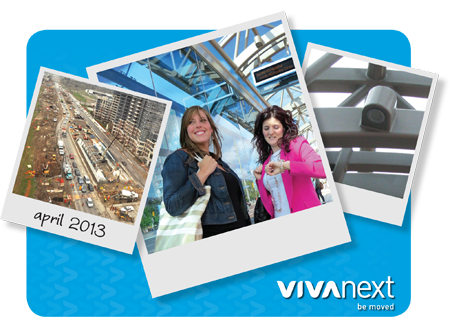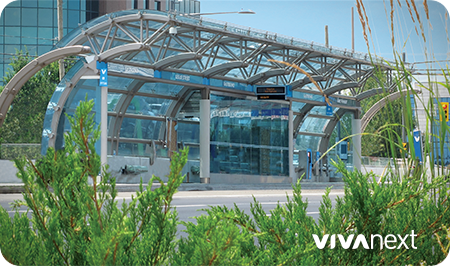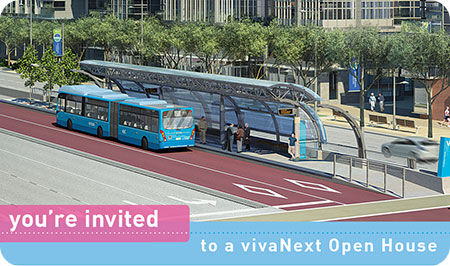The vivaNext commitment is to ensure everyone feels equally welcome on vivastation platforms and is able to board the Viva vehicles, whether they have mobility or other physical limitations, or are pushing a baby stroller, or for any other reasons feel uncomfortable accessing transit service. Over this holiday long weekend, we hope you get out and about using transit and take advantage of the system.
In addition to meeting all the accessibility requirements set out in Provincial and local regulatory frameworks, we’ve gone to great lengths to design the new platforms so all users have a comfortable and pleasant customer experience – and we obtained advice and input from the CNIB and York Region’s Accessibility Committee during the design process.
Here’s what we’ve built into the new stations to ensure all users feel safe and comfortable:
- The pedestrian ramps to the platform have a shallow incline and handrails on either side, and there are no changes of grade or tripping hazards anywhere on the platform. For people with impaired vision, the platform edge is clearly indicated through the use of domed tactile tiles in a contrasting colour. At the primary bus stop location there are directional tiles which provide directional grooves going toward the bus, which will be helpful for people using canes for guidance.
- People using wheelchairs will have no difficulties getting in and out of the heated enclosures, which provide wheelchair-turning radius inside, and have doors at either end to simplify access. And the enclosures have barrier-free doors which have been designed to meet the highest accessibility standards including their button placement and operations such as door opening speed and how the door responds if it contacts an object. Even in construction zones, we try to maintain one accessible sidewalk at all times.
- We’ve included benches inside the enclosure and outside, complete with grab bars for people who appreciate a little help getting up and down. And for anyone who dreads the chilly experience of sitting on a metal bench in a Canadian winter, we’ve planned for that too. The benches are constructed from durable Brazilian Ipe wood that will make sitting a little warmer in the cold weather; which is right around the corner!
- The electronic ITS elements are all designed to ensure using the equipment is equally successful for all our customers. All the fare equipment is designed to be functional for people at wheelchair height or with other physical limitations, with angled screens, clear, bright graphics and large push-buttons. The VMS will provide clearly visible information about buses, routes and the time. We extensively researched and analyzed our PA system to make sure it’s clearly audible, and provides full coverage along the platform and in the enclosures. The notice holders for system updates are posted at the right height so they’re easily read whether you’re walking or in a wheelchair. And we’ve installed large map cases at each platform, illuminated to make it easy for everyone to navigate their route.
Overall, our objective has been to provide a comfortable, safe and welcoming experience for all our transit riders with no barriers or restrictions. With back to school on everyone’s minds, safety and accessibility make a world of difference. Enjoy your holiday weekend!










